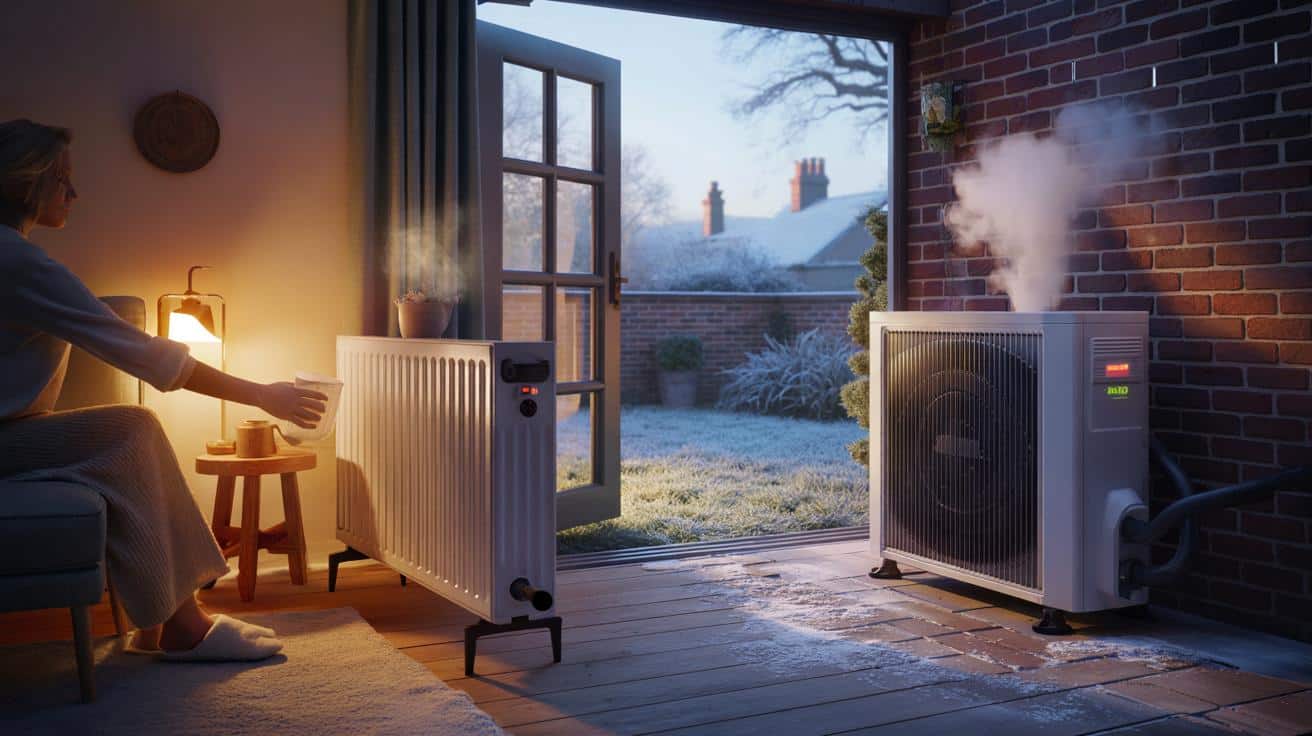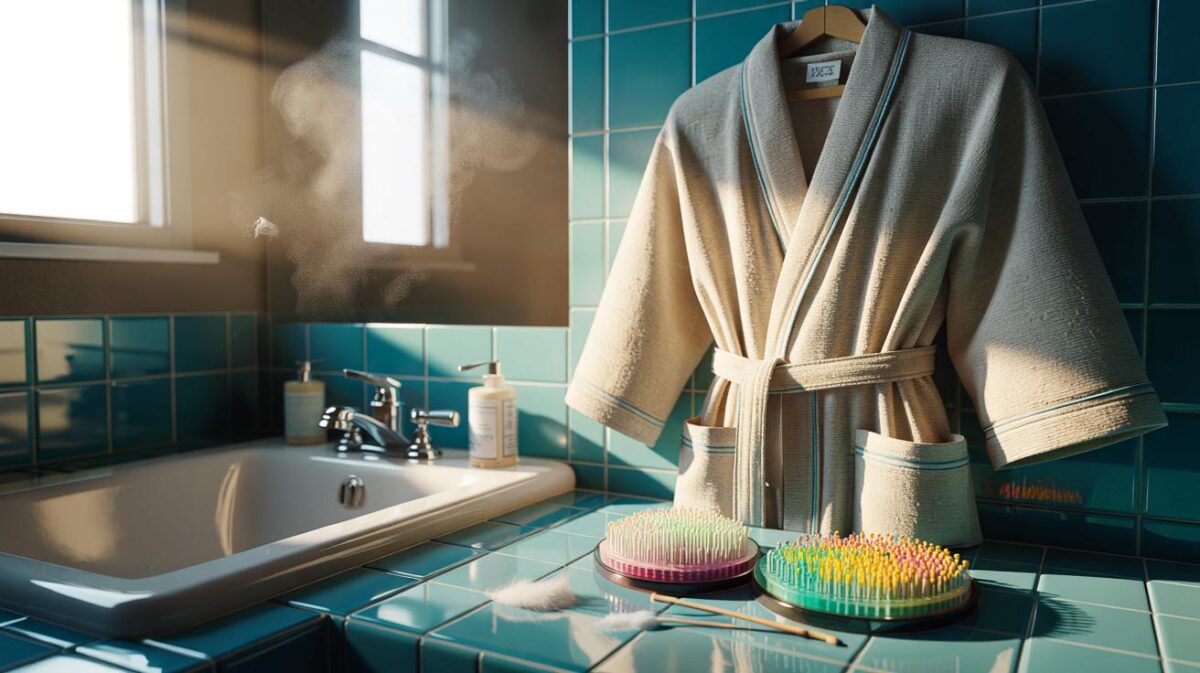The promise is comfort and lower carbon. The fear is a chilly living room and a confused app. This winter, the trick isn’t more heat. It’s smarter heat.
The frost was still clinging to the car when I padded downstairs, kettle on, slippers searching for a warm patch of rug. The radiators felt lukewarm to the touch, almost shy. Yet the room held a steady, calm warmth, not a blast, more a gentle wrap. Through the back door I could hear the soft whirr of the outdoor unit, a steady breath against the crisp air. *You can almost hear the house exhale.* My neighbour, boiler loyalist, likes his morning radiators hot enough to park toast. Me, I’m learning the heat pump’s rhythm. What if warmth worked differently?
Rethink heat: low and slow wins
We grow up with boilers that roar on, then vanish. Heat pumps don’t play that game. They prefer a steady pace, nudging your home towards a set temperature and holding it there without drama. **Heat pumps love steady habits.** The goal isn’t hot radiators. It’s a warm home. When you drop the flow temperature and run for longer stretches, the system can deliver more heat per unit of electricity. Think less sprint, more marathon. Your comfort lands softer, and your bills often follow.
Take Mo in Leeds. She used to chase the thermostat: big morning boost, steep night setback, daily wrestling match. After her installer showed her weather compensation, she set the target room temp to 19.5°C, lowered flow to around 42°C, and left the thermostatic radiator valves fully open. The house stopped yo-yoing, and her smart meter told a quiet story: smoother lines, fewer spikes, a meaningful drop in daily kilowatt-hours. Not magic, just a different way to drive. Cold radiators, warm toes. **Cold radiators can still mean a warm home.**
Here’s the why. A heat pump’s efficiency (its COP) improves when it doesn’t have to make scorching water. Every degree you shave off flow temperature reduces the lift the compressor must work against. That’s free efficiency. Give it a long runway and it sips rather than gulps. You’ll also notice fewer hard starts and less noise. And when a frosty morning triggers a defrost cycle, the system recovers without a lurch. It’s a calmer graph. It’s a calmer room. Small changes in settings can rewrite how the house feels hour by hour.
Control like a pro: settings, habits, and small wins
Start with the setpoint: pick a comfortable target and hold it. In many UK homes that’s 18.5–20.5°C. Open your TRVs wide so the heat pump “sees” the whole zone, then let the main controller do the thinking. If your unit has weather compensation, use it; your flow temperature will rise a touch on colder days and glide lower when the weather softens. Schedule gentle pre-heats before you need warmth, especially if you’re on a time-of-use tariff with cheaper off-peak hours. You’re not blasting. You’re grooming the day.
We’ve all had that moment when the house feels chilly at 7am and your hand doubts the numbers. That’s when people stab “boost” and crank the flow up to boiler-like levels. Try patience first. Big setbacks overnight force hard morning climbs, which cost. A smaller setback — say 1°C — or none at all often lands cheaper and cosier. Keep doors ajar to share warmth across rooms, bleed radiators at the start of the season, and give your outdoor unit space to breathe. Let’s be honest: nobody really does that every day. Build five-minute checks into a Sunday coffee.
Your hot water routine can also save pounds. Schedule cylinder heats in the warmer part of the day if your system allows — milder air equals better COP. Run a weekly high-temp cycle for hygiene, then revert to a lower everyday setpoint. **Small tweaks beat big bills.** Think like a gardener: a trim here, a tidy there, and the system thrives.
“Heat pumps like to sip, not gulp.”
- Quick wins: lower flow temp by 2–3°C, wait 24 hours, and watch comfort and usage.
- Open TRVs, balance later if a room lags.
- Check filters and vents; clear leaves and ice around the outdoor unit.
- Use pre-heat windows before occupancy, not after you arrive.
- Keep an eye on defrost cycles on frosty days — humming is normal.
The winter mindset shift
This is a new pattern of warmth, and it can feel odd at first. The house doesn’t “blaze up” the way a boiler does; it settles. Rooms even out. Noise fades into the day. If you’re on a flexible tariff, you can nudge pre-heats into cheaper slots, then let the system idle gracefully. Your job isn’t to be the thermostat micromanager. It’s to set the vibe and step back. You’ll know it’s working when you stop thinking about it.
| Key points | Detail | Reader Interest |
|---|---|---|
| Lower flow temperature | Target 35–45°C for rads where possible; nudge down in small steps | Improves COP and comfort without harsh swings |
| Run steady, not spiky | Set-and-hold room temp; small or no night setback | Fewer peaks, fewer costs, calmer mornings |
| Use smart scheduling | Pre-heat before occupancy and during cheaper tariff windows | Saves money while keeping rooms cosy |
FAQ :
- Why do my radiators feel cool with a heat pump?Because the system runs at lower flow temperatures for higher efficiency. The room can be perfectly warm even if the radiator isn’t hot to the touch.
- Should I turn my heat pump off when I go out?Usually no. A small setback is fine, but full off means the system works harder — and often pricier — to catch up.
- What’s a good room temperature target in the UK?Many households land around 19–20°C for living spaces, slightly cooler for bedrooms. Comfort beats a number on a dial.
- Do TRVs still matter?Open them wide to avoid strangling flow. If one room overheats, trim that single valve a notch rather than raising flow temp.
- How do I handle hot water with a heat pump?Heat it during warmer or cheaper periods, keep a sensible everyday setpoint, and run a regular high-temp hygiene cycle as advised by your installer.








